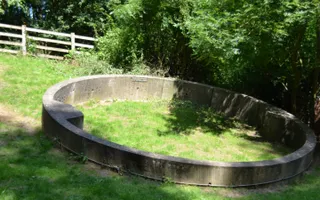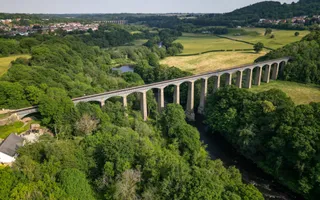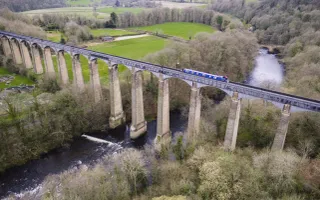This year marks the 220th anniversary of Blisworth Tunnel, on the Grand Union Canal. To celebrate this impressive milestone, we dig a little deeper into the remarkable history of this famous old tunnel.
Blisworth Tunnel stretches for more than one-and-a-half miles, linking the villages of Stoke Bruerne and Blisworth, in Northamptonshire. The third longest navigable tunnel on our network, after Standedge Tunnel and Dudley Tunnel, this extraordinary example of early civil engineering has a storied past.
After 12 years in Stoke Bruerne, Canal & River Trust volunteer, Kathryn Dodington, probably knows more about Blisworth Tunnel than most. “It was the last missing piece of the canal,” she tells us, “and the contractors had a choice to make. To reach the bottom lock, they could go over the landscape, they could go round, or they could go through. The choice was made to go through.”
It would prove a fateful decision, as the building of Blisworth Tunnel became one of the most troublesome and tumultuous endeavours of the entire construction of the Grand Union Canal.
Work began in 1793, as navvies set about excavating the tunnel, using nothing but rudimentary picks, shovels and wheelbarrows. After three years of back-breaking labour, tragedy struck. When workers breached an underground stream, a section of the tunnel collapsed into quicksand, claiming the lives of 14 men.
The project was put on hiatus, with calls for plans for the ambitious tunnel to be scrapped in favour of an elaborate lock system. But in 1802, work resumed using a revised course, and just three years later, in 1805, Blisworth Tunnel was finally opened. At 1.7 miles long, and wide enough for two narrowboats to pass in opposite directions, it was an incredible feat of engineering for the time.
“It’s still the largest, longest, freely navigable wide tunnel in Europe,” says Kathryn, “and even to this day, it’s relatively easy to navigate, unless you’re piloting a wide boat, in which case, you have to have volunteers at each end of the tunnel to guide you through.”
With no towpath, navigating Blisworth Tunnel was no cakewalk. Passage was slow and arduous, as boaters had to ‘leg it’ through the tunnel, lying on their backs on top of their narrowboats and pushing the vessels along with their feet.
From 1871, steam tugs were used to pull the boats through, and though many boaters still preferred to ‘leg it’, to avoid the extra cost, by the 1930s, with the proliferation of motor boats, the practice soon fizzled out.
As time wore on, the shape of the tunnel began to change, and by the 1970s, the middle third of the passage (around 1,000 metres) had begun to shift upwards, eventually making it unnavigable. Within a few years, the tunnel was in danger of collapse. British Waterways stepped in, beginning a major rebuilding project that would not only save Northamptonshire’s historic tunnel but usher in a new era in civil engineering.
As Kathryn explains: “Blisworth Tunnel has a critically important place in history, because the techniques and the materials used in the repairs were done, in part, to prove the design theory for the Channel Tunnel. The same methods were adapted and refined to build the Channel Tunnel, and later Crossrail and HS2.”
These pioneering methods included lining the damaged sections with pre-cast concrete rings, and you can still see one of the unused rings on display near the south entrance of the tunnel (below).
Blisworth Tunnel was reopened in 1984, and 30 years later, in 2014, it was awarded a Transport Trust 'Red Wheel' in recognition of its industrial heritage and importance – a fitting tribute to the ingenuity and courage of those early canal builders, and those who followed in their footsteps, nearly two centuries later.
Today, Blisworth Tunnel is a popular destination for boaters, walkers, and sightseers, with thousands of visitors every single year. In its 220th anniversary year, it’s important we celebrate this remarkable piece of our industrial heritage.








